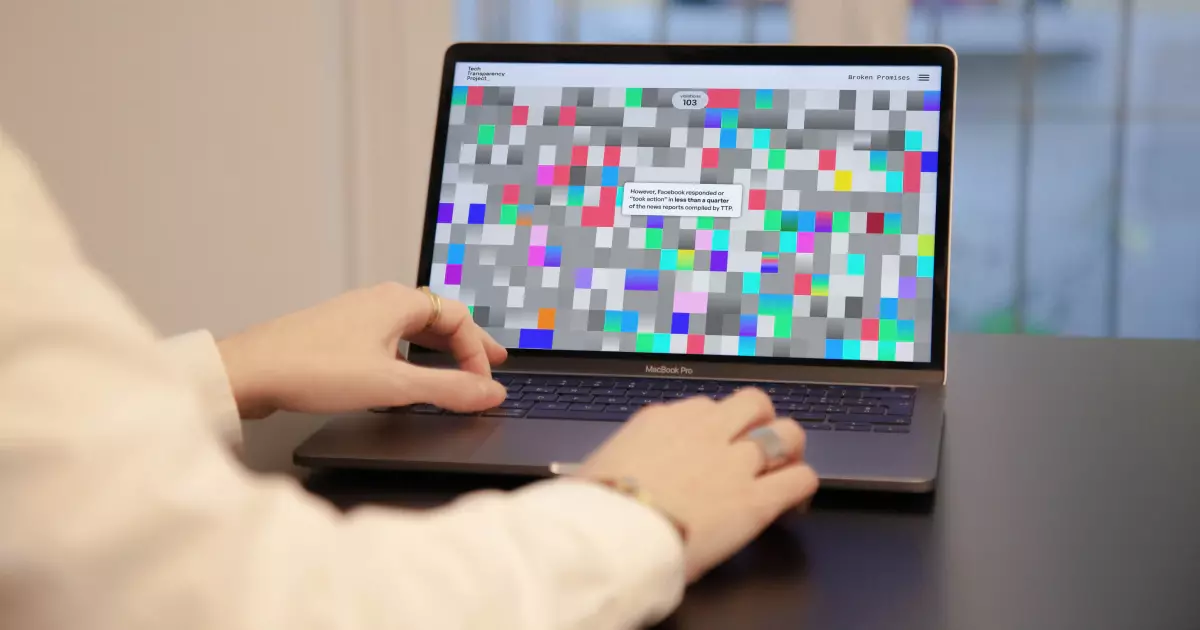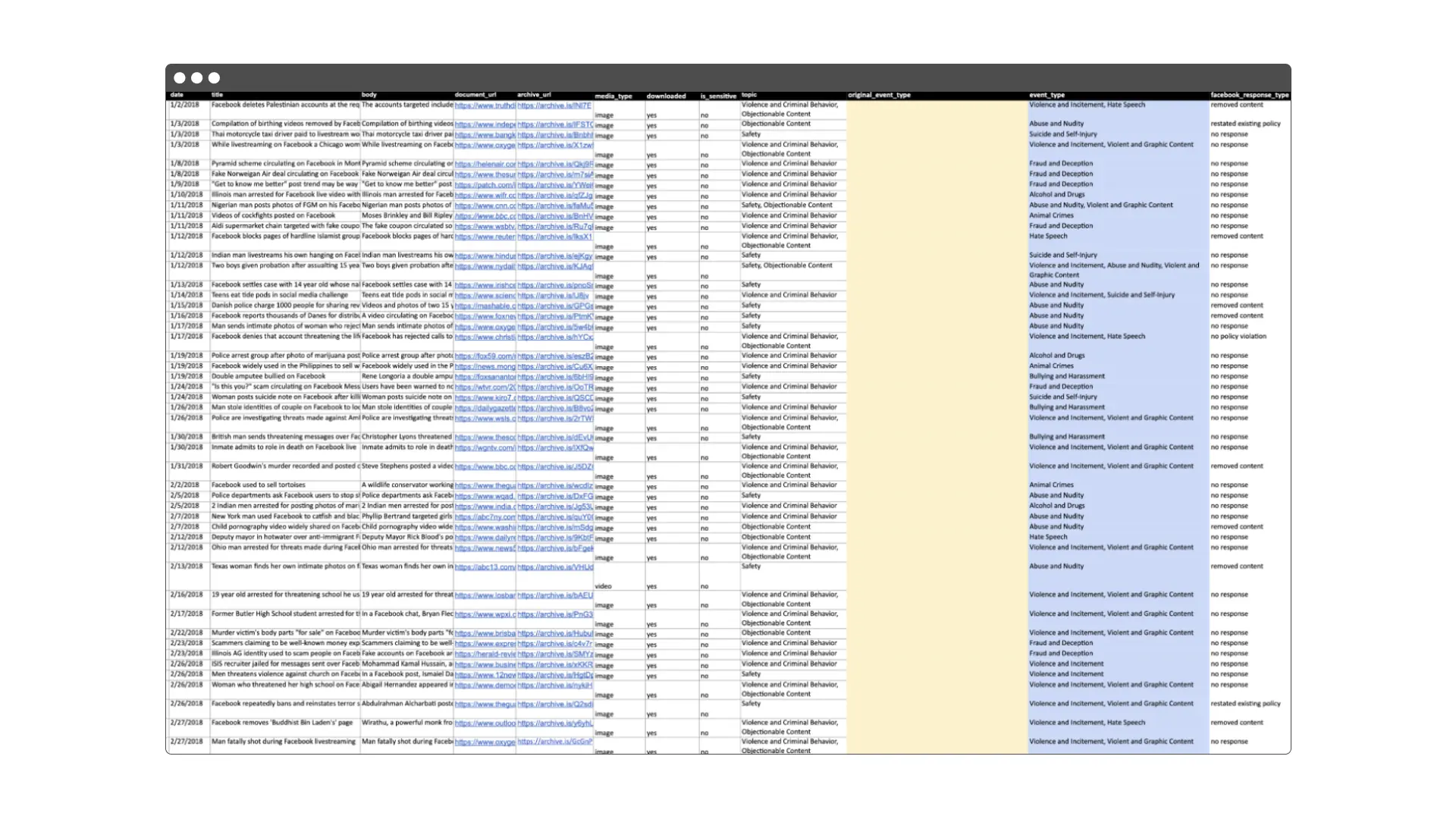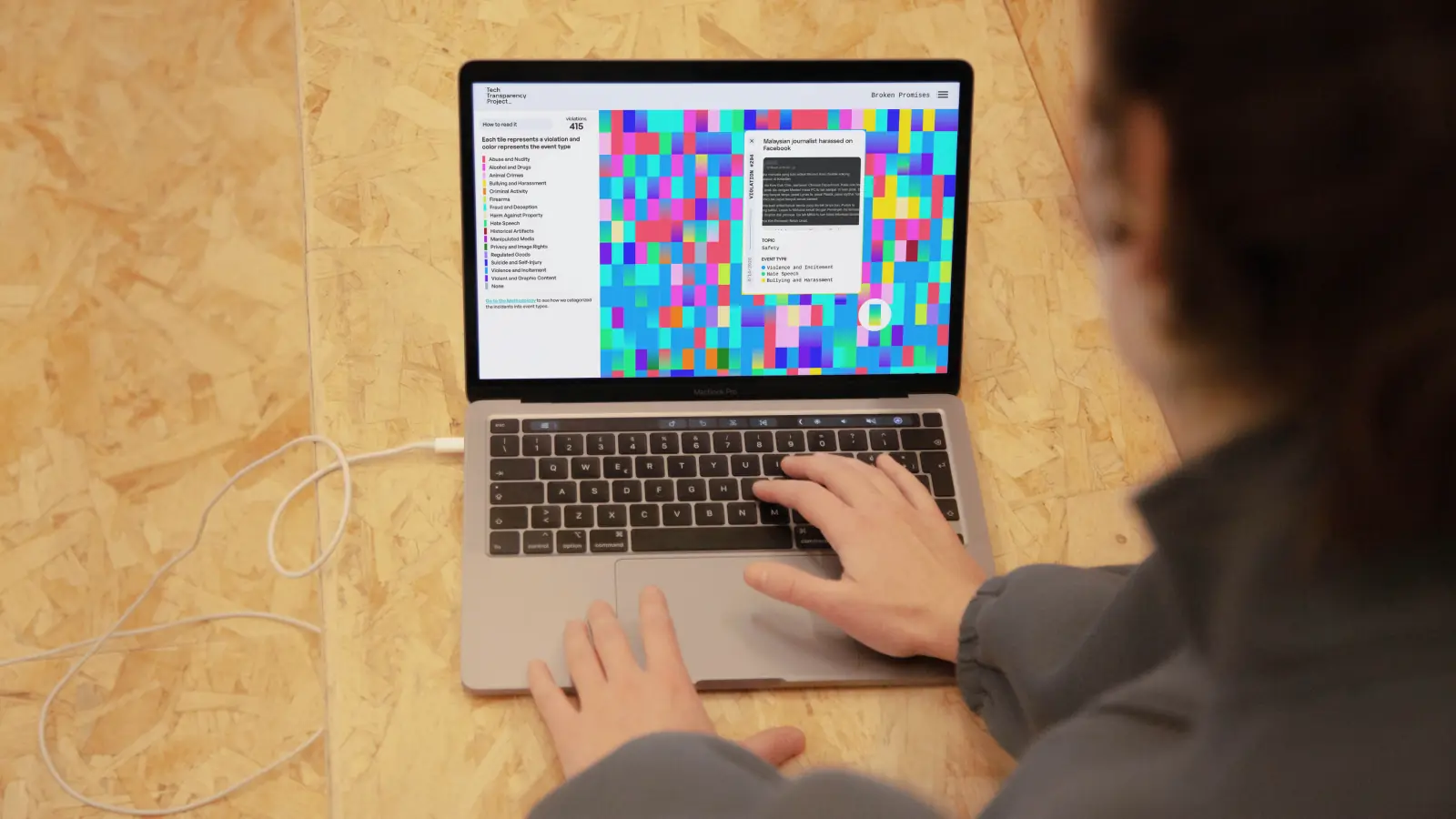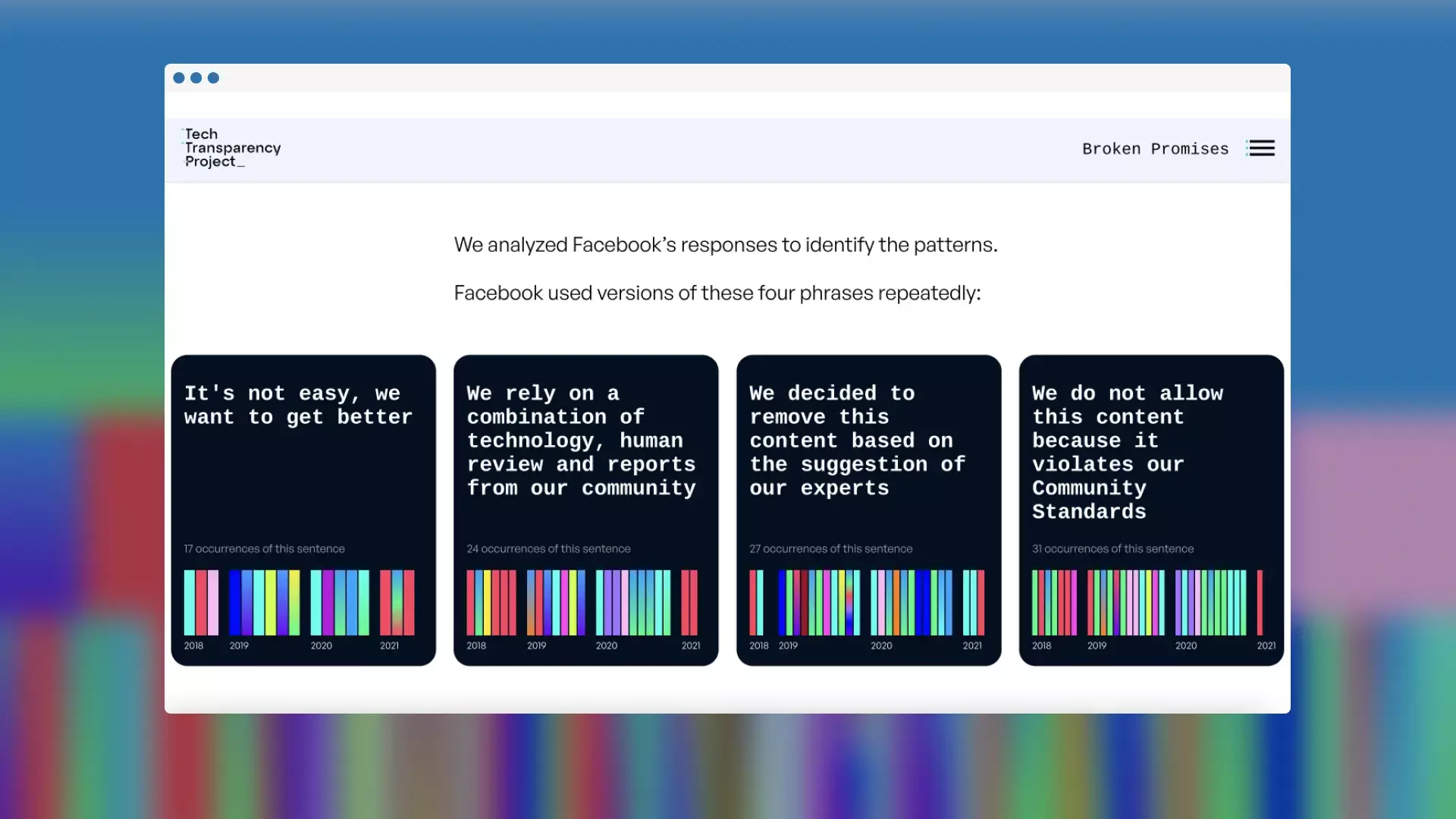
Investigating Facebook's Broken Promises
Tech Transparency Project's Broken Promises aims to hold executives at Meta accountable for their assurances to "do better." The piece sets out to prove that these sound bytes—and essentially, Facebook’s entire PR strategy—amount to Broken Promises. Researchers at TTP contacted Accurat to visualize their findings, to create an engaging work of data journalism.




